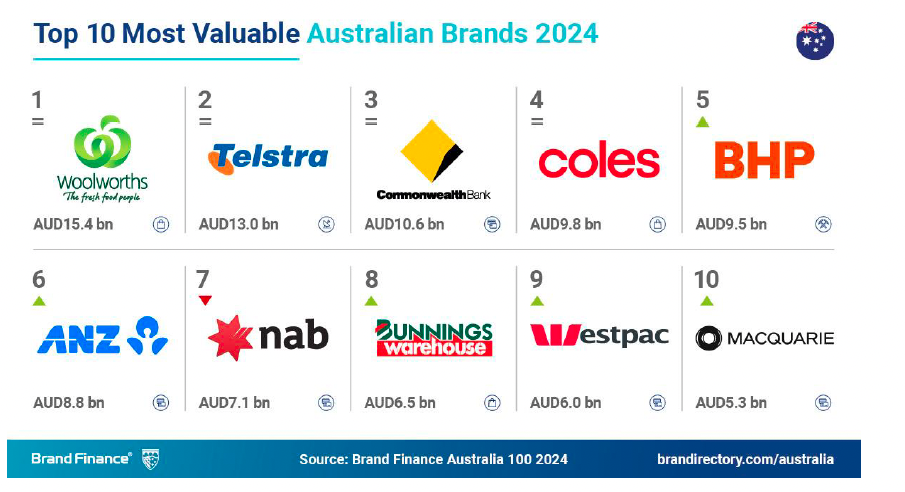Government records ‘worst CX result ever’, banking going backwards, super and investment average at best – NAB, News Corp, Flight Centre, Service Australia plot recovery course

What you need to know:
- Australia’s Banking sector is recording its worse CX scores since the start of the decade, according to the Forrester CX Index. But that’s still better than the public sector, which recorded its worst result ever.
- In fact, every government agency studied returned a poor or very poor result.
- Superannuation was at least awful within normal parameters. And while the investment sector returned average results – making them high achievers compared to their peers, the uncomfortable reality is that CX adds nothing to product differentiation. The spread between the highest and lowest achievers in the category was 2.4 points.
- As if times aren’t hard enough for experience managers, whether they work in fields such as design, CX, or voice of the customer (VOC), budgets are constrained by insipid economic conditions at the very moment many brands should be looking to supercharge their efforts using the new capabilities offered by technology such as large language models.
- Leaders from NAB, News Corp, Flight Centre, and Service Australia shared their own success recipes.
- That those formulae included Knock it down and start again and Burn it all down and rebuild provides an acute sense of where many experience leaders find themselves today.
It was very, very bad. We decided that we would burn it all down and start afresh.
Australia’s CX leaders are fighting to improve the lot of the customer on two fronts. On the one hand new waves of technology are upending traditional approaches and that can often means firms have to implement a major CX overhauls, rather than just building incrementally. Speaking at Forrester’s CX conference last week, News Corp’s head of audience intelligence, Sabrina Chan, told delegates that just three years ago the media giant’s local program was struggling.
Meanwhile Ashley Taylor, Global Voice of the Customer Program Specialist, Flight Centre Travel Group, was even more blunt: “It was very, very bad. We decided that we would burn it all down and start afresh.”
But CX professionals are also confronting the same economic realities as their peers across the enterprise. With the economy in uncomfortable post-inflation stasis, CFOs are playing hardball on costs and resource. Though arguably, given how much has been spent on digital transformation and CX in recent years, that is understandable.
Awful within normal parameters
Either way, tardiness in outlay is now being reflected how customers experience brands, according to Forrester’s latest Australian CX Index report.
Among the key findings;
- Banking: This year, the Australian banking industry saw the lowest average score ever since 2020. Only ING and Bendigo made it into the ‘good’ category of CX.
- Public sector CX is also in retreat with averages scores for the government sector in Australia retreating by 3.5 points compared to last year. The situation is even worse than in banking – with government recording the lowest average score ever. All ten government agencies in the study ranking in the ‘poor’ or ‘very poor’ categories of CX.
- Superannuation at least flatlined, with no firm standing out with ‘good’ CX. There is also a lack of differentiation in the industry, with a mere 2.4 points separating the highest- and lowest-scoring brands.
- Investment was the only category with average scores in the ‘OK’ category of CX. Like superannuation, the industry also suffers from a lack of differentiation, with minimal difference between the highest- and lowest-scoring brands.
That’s a tough atmosphere to excel in, and it also highlights the need to be very careful about prioritisation, something Lance Thornswood, chief design officer NAB, discussed at the Forrester event.
NAB: Harder soft sell
According Thornswood, business priorities that begin outside the design team represent a primary overlay for the work the team does. “But when you’re looking at the option based on business priority, one of the key things that we take a look at is how can we most effectively prove that we’ve actually moved the dial?”
There is often a desire in CX and design “to focus on soft measures,” he suggested. But important as those measures are, hard numbers make business cases, “and we use those quantifiable things to help us prioritise.”
Thornswood thinks that’s a universal truth in banking as any other industry. “It’s sometimes going to be hard for design or the the soft sciences around CX to be seen as credible when you’re in a room with bean counters and product and project managers. They’ve got their Gantt charts and their spreadsheets, we’ve got colour and feelings… how do you measure all that stuff?
He said his team is very purposeful about first moving to quantify before offering up any recommendations.
“How will we know if a hypothesis of the recommendation made the difference. It’s a little extra homework up front, but it makes us a lot more credible within the organisation when we’re talking about things like satisfaction and feeling and whether purple is better than pink…”
News Corp: Total rebuild
Despite the scrutiny and the focus on measurable benefits, both New Corp and Flight Centre claimed demonstrable progress in their voice of the customer programs in recent years.
In both cases, there wasn’t really a choice.
According to Sabrina Chan, head of audience intelligence, News Corp: “To put it bluntly, our program was really struggling. There was a lack of actual insights, which also meant the business was relying on what we tend to call the ‘tummy compass’. What was the gut feel, rather than being motivated by meeting the needs, wants and desires of customers.”
To further complicate the challenge, News is a sprawling media business working across multiple channels, and the customers have different different interests. “Our customers were actually very disparate, disconnected data sets. Each set of data showed only a partial view of the customer’s world,” said Chan.
She acknowledged such challenges are not unique to News Coro but are fundamental.
“Ultimately we decided to knock down and rebuild the program.” The firm is believed to be using Medallia.
There were however other challenges that were more unique to News Corp and these also had to be included in the design.
The first is the scale. News Corp connects to 18 million customers a month across 150 brands spanning 10 content networks across news, sport, travel and health. “That creates challenges in how we had to build our program. And because individual interests can vary so much we need to ensure any program news runs reflects the diversity of the audiences.”
The second unique challenge: “The experience our customers have across our brands is inherently linked to the content of stories our journalists write and that content changes every day, every hour and every minute.”
For instance, the emotional experience of reading about the war in Ukraine is obviously very different to reading about travel or fashion,” said Chan.
“So the total experience they have on our site is not something we can control – but it’s something we have to factor-in to the planning. The other issue is that the experience of the content can then take customers off network as they explore issues further. This impacts how and when to take feedback from customers.”
Ultimately News chose not to build a program that was just a rating scoring system of customer experiences with its content, but something that “would identify customer needs, wants and preferences”, with News then effectively able to use CX to underpin new growth strategies.
We are absolutely exploring emerging technology. We've got a pilot happening with Microsoft co-pilot in very set, controlled circumstances. We acknowledge that emerging technologies like artificial intelligence are going to be important to us moving forward.
Flight Centre: Controlled burn
Flight Centre’s Ashley Taylor likewise opted to rebuild the entire VOC edifice.
“When I started in the business some two years ago, we had six different countries doing different things. Some of them had cards in stores. There were various NPS programs that, in certain places, had samples of 12. It was very, very bad,” said Taylor.
“We decided that we would burn it all down and start afresh.”
Jump forward to today and Flight Centre has an increasingly sophisticated program in place operating at scale. “We currently have 300,000 survey responses every year. It’s a pretty reasonable amount, but that’s just a survey component. On top of that, we have about another 300,000 engagements just on Facebook. If you throw in Twitter, throw in Instagram, and Trustpilot and Google reviews, we’re well up over millions of records and documents that we need to process,” Taylor added.
“If you are trying to get a human to understand what this means, or even a basic text instrument, you’re not going to get a lot of precision or recall. And I’m really pleased that we’ve actually got a really good tool (from Qualtrics) to do this.
“We started in June 2022 and we’ve released what I consider to be a foundational program that is live in five countries. We were taking events, people were getting quotes, either accepting them or not accepting them, people returning from travel, people were engaging with our digital assets and giving us feedback on those things, and that went through to our data lake.”
From that data, surveys could be batched and sent out, and he says that was used actively.
For Taylor, however, it still felt like a trip down the time tunnel back to 2015-type functionality.
“But now with the help of Qualtrics, we took the next step in March. We’ve been working on integrating everything so that where previously we were just soliciting information and data is structured, we’ve moved into an unsolicited and solicited environment with structured, unstructured data.”
That’s another big improvement, and he said it is great for generating the score. “But it’s not as useful if you want to do something about it.”
Instead, the real gold is in the opinions and comments people leave, and in getting a richer understanding of those.
“That allows you to drive change. We work through a listen, learn, act framework, and act is the most important. You have to know what you’re going to act on.”
Per Taylor, “That’s where AI, and natural language understanding, plays a bigger role. The natural language understanding has really helped us with that particular component.”
The new capability arrived in March, and has now been live for about three months. “We’ve been able to act on it pretty quickly, and we’ve just got a much more nuanced view of what’s happening by leveraging AI,” he added.
The large language model underpinning its platform language model is categorising the information Flight Centre has collected “in a meaningful way in terms of things that we can actually do something with”.
Like what?
“The system understands emotional intensity, it understands the difference between sarcasm and normal comment. If one customer says, ‘My holiday was sick as’ and another says, ‘I got really sick of my holiday,’ it understands the difference between those two contexts, and scores that accordingly. So it’s very neat tech. When you’re dealing with millions of sentences, you need something like this to do that for us.”
Business impact
The work the service desk for instance does adds a lot of heft to the overall NPS, said Taylor. “In fact, we know that if they stopped being helpful tomorrow, our NPS would drop by 27 points. So they should probably keep being helpful.”
The use of large language models in VOC programs is one of the early success use cases for experience management businesses.
Earlier this year, senior Forrester Research Analyst Colleen Fazio told Mi3, “Conversational feedback has been a really hard nut to crack because there’s a lot of risk. If you do it using generative AI, you’re releasing generative AI into your customer experience. And that’s risky. We’ve all seen the chatbots go wrong,” she said.
To that end, Fazio said it was good to see Qualtrics taking sort of a staged approach. “They are doing it in small stages, and not just releasing a feature.”
In particular, she highlighted the approach to conversational feedback, which she said could really shake up the survey industry. “If they do it right, if it all works out, it’ll be life-changing.”
Service Australia: Robots need humans… for now
Flight Centre’s experience, and Fazio’s comments, highlight the growing impact of AI in the CX and VOC categories. More change is likely to come quickly.
According to Jarrod Howard, deputy managing director, customer service delivery group for Service Australia, his organisation has a team charged with understanding how emerging technologies might be used to improve the customer experience.
“We are absolutely exploring emerging technology. We’ve got a pilot happening with Microsoft co-pilot in very set, controlled circumstances. We acknowledge that emerging technologies like artificial intelligence are going to be important to us moving forward.”
But it’s important that the customer is onboard for the ride, he suggested.
“What we also would say is that we just need to be really careful about how we actually engage utilising that with our customers. We know that at the moment, we hear very clearly from our customer base, that the expectation is that a human is involved in the decision-making processes. Now, whether or not that will change as customer expectations change over time, we’ll have to wait and see,” he said.
Silver lining
Despite the tough circumstances, afflicting CX in Australia, there is a silver lining according to Riccardo Pasto, principal analyst at Forrester and an author of the Forrester report. “More organisations are aware that they need to prioritise their customers’ needs to drive business growth.”
Now they just need to do it better.





